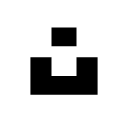How I Created A $30K/Year Local Newsletter With $100
Hello! Who are you and what business did you start?
Hello! My name is Ida Jakobson and I started The Mallorcan, a local media brand all about Mallorca, Spain. Our core business is a weekly email newsletter, supported by our web content and social content.
Our customers are local businesses in Mallorca looking to reach an audience of residents and visitors to the island.
Today, our sponsorship and advertising revenue generates around $2.5k per month.

What's your backstory and how did you come up with the idea?
I experimented with moving to Mallorca in the fall of 2021 to escape the cold winters in Sweden. Moving to a new place is exciting but also challenging. You need to start from scratch to build a community and this isn't always easy.
My idea was born out of a desire to meet new people in Mallorca. Originally I...

Download the report and join our email newsletter packed with business ideas and money-making opportunities, backed by real-life case studies.

Download the report and join our email newsletter packed with business ideas and money-making opportunities, backed by real-life case studies.

Download the report and join our email newsletter packed with business ideas and money-making opportunities, backed by real-life case studies.

Download the report and join our email newsletter packed with business ideas and money-making opportunities, backed by real-life case studies.

Download the report and join our email newsletter packed with business ideas and money-making opportunities, backed by real-life case studies.

Download the report and join our email newsletter packed with business ideas and money-making opportunities, backed by real-life case studies.

Download the report and join our email newsletter packed with business ideas and money-making opportunities, backed by real-life case studies.

Download the report and join our email newsletter packed with business ideas and money-making opportunities, backed by real-life case studies.

























